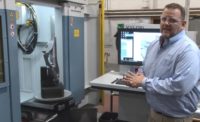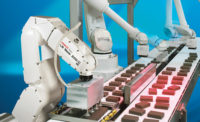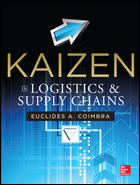MCLEAN, Va.—The inaugural Automation in Manufacturing (AIM) Conference, organized by The Association For Manufacturing Technology (AMT), ended on a high note for the manufacturing professionals who gathered May 15 to immerse themselves in robotics and advanced automation for the future, state-of-the-art developments in technology and their applications.
“The strong turnout for this new event shows the continued interest and emphasis on automation technology by the industry as a key tool in driving U.S. productivity." said Douglas K Woods, President of AMT. "AIM attracted industry leaders and technologists who shared insights on future trends, as well as practical solutions that are currently available.”
Automation as a wise investment was a key take-away from AIM. A full range of presentations from end users, integrators, OEM's and industry advocates covered advances in robotic technologies and the competitive edge manufacturers can gain through the increased productivity and profit achieved by incorporating robotics into manufacturing operations.
Mars Exploration Rover Project Chief Engineer and AIM keynote speaker Bill Nelson provided a glimpse into the technology on the Mars Exploration Rover Curiosity, including solar arrays, navigation, panoramic cameras, and rock abrasion tooling, which allowed the rover to send data back to Earth. He also told stories of the challenges his team faced during the robot’s planned 90-day mission to Mars, which has now lasted a surprising 10 years. These challenges included getting bogged down in soft ground, getting stuck on large rocks and recovering from complete power loss.
John Dulchinos, Vice President, Global Industrialization for Jabil, Inc. shared thoughts on the benefits and scope of automation.
“Technology drives productivity. The countries with the highest productivity also have the highest density of robots – the top three being Japan, Singapore and South Korea. This leads to lower costs and allows for a higher standard of living," said Dulchinos. "For example, in 1950, one U.S. farmer fed 27 people; today one farmer feeds 150 people.”
Dulchinos also said that though the technology is still expensive, if it is flexible and can serve multiple purposes, the cost is justified.
Dispelling some myths in response to those who are wary of robots, Jeff Burnstein, President, Association for Advancing Automation (A3) told the group: “Innovation has always led to growth and more jobs. Robots are just better tools, not our masters. We can’t even imagine the new products and industries that improved automation will help create in the future.”
For more information on the AIM conference, visit www.AMTonline.org.


